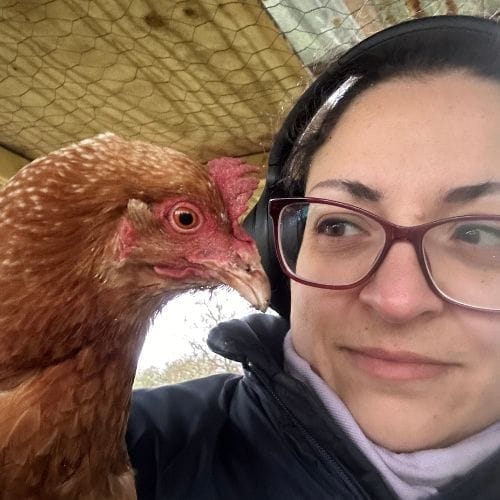
This site uses affiliate links and I may earn a small commission when you use my links and make a purchase without incurring additional fee yourself. Many thanks for supporting this website.
Please click here for more details.
Italian New Year’s Eve Food Traditions You Need to Try
In Italy, New Year’s Eve—Capodanno—isn’t just about fireworks and champagne. It’s about gathering around the table with family, friends, and more food than you think you can handle. Every dish carries a meaning: lentils promise wealth, pork brings progress, grapes guarantee sweet months ahead. Forget resolutions—you eat your luck into existence.
If you’ve ever wanted to celebrate like an Italian, here’s your guide to the traditional Italian New Year’s Eve foods you need to try at least once in your life.
Italian New Year’s Eve Food Traditions You Need to Try
The Symbolism of Italian New Year’s Eve Foods
In Italian culture, food and superstition are like spaghetti and tomato sauce—inseparable. Each bite on New Year’s Eve isn’t just for taste; it’s a charm for prosperity, abundance, fertility, and happiness. Italians firmly believe that what you eat when the clock strikes twelve can shape the year ahead. And honestly? It’s the tastiest way to hedge your bets for good fortune.
1. Lentils: The Lucky Coins of Capodanno
Ah, lenticchie! These little round legumes resemble coins, which is why Italians believe eating them at midnight will bring wealth and financial luck in the coming year. Tradition dictates they’re served stewed, with a rich pork sausage called cotechino or zampone.
In Northern Italy, they simmer lentils until they’re creamy, while in Central regions they’re often cooked in tomato sauce with garlic and bay leaves. However you prepare them, the more you eat, the more prosperous you’ll be—or so la nonna insists.
2. Pork Dishes: Cotechino and Zampone
On Capodanno, pork is a must. Why? Because pigs root forward as they walk, symbolising progress into the New Year. The classic choices are:
Cotechino – a rich, slow-cooked pork sausage with a velvety texture.
Zampone – pork sausage meat stuffed into a pig’s trotter for a more rustic experience.
Both are boiled for hours, sliced, and served with lentils or polenta. They’re hearty, indulgent, and exactly what you need after one too many glasses of bubbly.
3. Grapes at Midnight: Twelve Grapes for Twelve Months
At midnight, Italians pop twelve grapes—one for each month of the year. Sweet grapes promise good months; sour grapes hint at tougher times. The tradition actually comes from Spain but Italians embraced it wholeheartedly, because really, who’s going to argue with more food at midnight?
Pro tip: use seedless grapes if you’re celebrating at home—you’ll thank me when you don’t choke on January.
4. Pomegranate: Fertility and Prosperity
The ruby-red seeds of melograno symbolise fertility, abundance, and eternal life. Some Italians eat fresh seeds by the spoonful, while others drop them into cocktails or Prosecco for a festive toast.
Why not try a Pomegranate Prosecco Spritz? Just add seeds and juice to your sparkling wine, and you’ve got yourself a lucky, Instagrammable cocktail.
5. Panettone and Pandoro: Sweet Beginnings
You didn’t think Italians would skip dessert, did you? On Capodanno, it’s all about Panettone and Pandoro.
Panettone: Milan’s famous tall, fruit-studded sweet bread.
Pandoro: Verona’s golden, buttery star-shaped cake, often dusted with powdered sugar.
Some serve Panettone with mascarpone cream, others dip Pandoro into chocolate or liqueur. Either way, ending the year with sweetness is the Italian way to guarantee a “dolce” start to January.
6. Prosecco and Sparkling Wines: A Toast to the New Year
Midnight without bubbles? Impossibile. Italians raise their glasses with Prosecco, Asti Spumante, or Franciacorta depending on the region. The fizz represents joy, celebration, and shared moments.
When the countdown ends, the glasses clink, and someone inevitably shouts “Cin cin!”—that’s your cue to sip and seal the deal on a joyful year.
7. Traditional Italian New Year’s Eve Dinner Menu
So what does a full Italian New Year’s Eve dinner look like? Typically:
Antipasti: cured meats, cheeses, olives.
Primo: pasta with seafood in Southern Italy, or rich risottos in the North.
Secondo: pork with lentils, of course.
Dolci: Panettone, Pandoro, torrone (nougat).
Drinks: sparkling wines, grappa, amaro.
Every region has its twist. In Naples, expect seafood-heavy meals; in Emilia-Romagna, cotechino reigns supreme.
8. Other Fun Italian New Year’s Eve Traditions
Food isn’t the only superstition Italians follow on New Year’s Eve:
Red underwear: worn for luck and love.
Throwing old things out the window: symbolically clearing out bad energy.
Fireworks: loud bangs to scare away evil spirits (and annoy your neighbours).
It all ties back to the same theme: making space for abundance, joy, and fresh beginnings.
Hosting Your Own Italian New Year’s Eve Feast
Want to bring Capodanno into your own kitchen? Here’s how:
Cook lentils with sausage (or a vegetarian version with roasted mushrooms).
Chill a bottle of Prosecco and prep 12 grapes per person.
Serve Panettone or Pandoro with whipped cream or gelato.
Don’t forget to scatter a few pomegranate seeds for luck.
Make it simple, make it festive, and most importantly—make it delicious. If you want to skip the planning, you can grab my Italian Holiday Dessert & Drinks Collection to get a ready-made Capodanno menu.
Conclusion
Italian New Year’s Eve food traditions aren’t just tasty—they’re symbolic charms that set the stage for a year full of prosperity, love, and joy. Whether you’re scooping lentils, slicing Panettone, or raising your Prosecco flute at midnight, remember: you’re eating your way into a lucky year.
Buon Anno, amici! And don’t forget the red underwear.

Zia Paola
Zia Paola is a burnout survivor, chicken enthusiast, and former veterinary surgeon turned digital mischief-maker. She writes from her semi-chaotic smallholding in the UK, where she splits her time between unhinged chickens, rustic recipes, and helping others reclaim their lives from hustle culture. You can find her ranting lovingly about slow living, food, and freelance freedom at www.badinfluenzia.com.

Get mildly chaotic life advice, anti-burnout rants, and unsolicited chicken wisdom delivered straight to your inbox. No fluff. Just feathers.
Created with ©systeme.io



